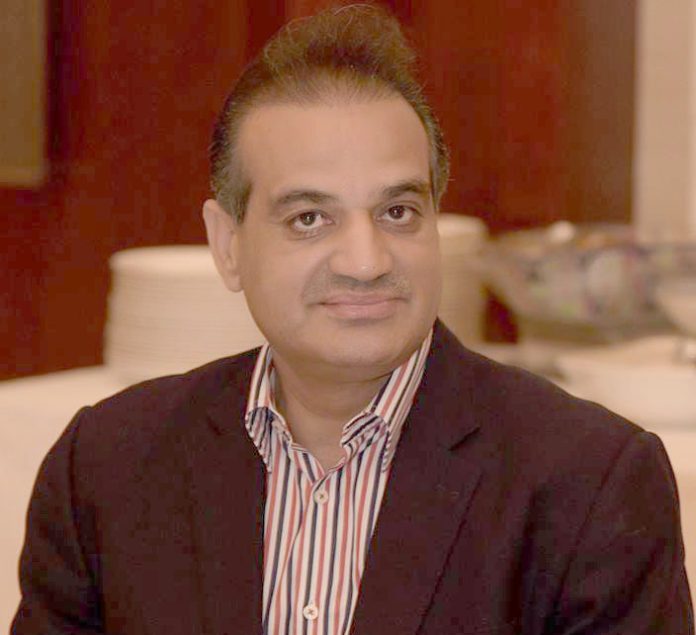Analysis
Ansar M Bhatti
Islamabad: The February 8 election will undoubtedly be remembered as a pivotal moment in Pakistan’s parliamentary history, marked by intense controversy surrounding the exclusion of a specific political party from the entire electoral process. The unfolding events have raised serious questions about the fairness and transparency of the electoral procedures.
Initially, the key leadership of the PTI found themselves behind bars, facing allegations of involvement in the May 9 incidents. Subsequently, the party faced another setback when it was stripped of its election symbol, the ‘bat.’ As if that wasn’t enough, numerous winning candidates from the party were purportedly denied their rightfully earned seats, adding fuel to the already heated situation.
The international community, too, expressed apprehensions about the legitimacy of the election process. The United States, in particular, promptly voiced its concerns, emphasizing the need for a thorough investigation into the allegations of fraud. This global response underscores the significance of ensuring a fair and just electoral process that upholds democratic principles.
The Australian government has conveyed its concerns regarding the conduct of the 2024 elections, expressing regret over the limitations imposed on the Pakistani people in their electoral choices. The restriction on certain political parties from participating in the elections is viewed as a setback to the democratic process.
‘Australia remains steadfast in its support for a democratic, stable, and prosperous Pakistan, emphasizing the importance of upholding commitments to democratic principles. These principles encompass not only the electoral process but also extend to fundamental rights such as human rights, media freedoms, freedom of expression, and freedom of association’.
The European Union and the Commonwealth states have both released statements that share a striking resemblance. The Commonwealth observers’ mission, during their visit to Pakistan, acknowledged certain irregularities in the elections, albeit in a discreet manner during their media interaction. Notably, an interesting comment arose from a high-ranking diplomat stationed in Islamabad, questioning the legitimacy of the Commonwealth observation mission chief, given the presence of the current Interior Minister of the Pakistani government seated beside him during the mission’s proceedings. This observation raises intriguing questions about the perceived objectivity and independence of the mission in the context of the political dynamics at play.
The excessive delay in releasing the final election results is a concerning deviation from a healthy electoral process. Ideally, the Election Commission should have promptly announced the results within two days of the election, yet regrettably, even after four days, the conclusive outcome remains elusive. This prolonged delay not only raises eyebrows but also lends credibility to speculations suggesting ongoing post-election manipulations.
The extended timeframe offers an opportunity for certain political entities to exert influence, particularly on independent candidates. The delay grants these ‘favorite’ parties ample time to maneuver and manage alliances or exert pressure on independents, potentially impacting the final outcome. Once the official results are disclosed, this window of influence may no longer be available.
With all factors considered, the pivotal inquiry emerges regarding the establishment of governments, both at the national and provincial levels. The electoral outcomes in Sindh and Khyber Pakhtunkhwa (KPK) indicate that the Pakistan Peoples Party (PPP) in Sindh and the Pakistan Tehreek-e-Insaf (PTI) in KPK are poised to effortlessly shape governments independently. Furthermore, the PPP is anticipated to take on a prominent role in the government formation in Baluchistan, collaborating with the Pakistan Muslim League-Nawaz (PML-N) and the Jamiat Ulema-e-Islam Fazl (JUI-F).
At the federal level, the competition for the prestigious position of the Prime Minister of Pakistan demands a display of political prowess from various parties. Ideally and logically the PML N seems better poised to get this post as the party supremo travelled all the way from UK to Pakistan despite a load of cases against him; got himself freed from all those cases and secured reasonable number of seats in the national assembly, though much short of what he and his party had claimed.
However Shehbaz Sharif may also emerge as the consensus candidate for the position of Prime Minister. In such a scenario, Asif Ali Zardari aims to secure the role of President of Pakistan, while Bilawal envisions a position akin to Deputy Prime Minister or an equivalent role. If these arrangements materialize, Maryam Nawaz could be viable candidates for the Chief Minister post in Punjab. In yet another scenario, PML N and the PPP may agree on another option whereby both parties can share PM office i.e for first two and half years PML candidate may be the prime minister and for the rest of the tenure PPP may nominate its candidate.
Another possible scenario: A strategic negotiation between Asif Zardari and other key players may result in Bilawal obtaining the Prime Minister’s position, with Nawaz Sharif assuming the role of President. The MQM is poised to play a significant role in the federal cabinet, and their interest in retaining the governorship of Sindh is apparent. If all these parties join hands then it may be dubbed as an extension or continuation of the PDM government, which came into being after dislodging of the PTI government.
Though PTI has claimed that it would form governments in KP, Punjab and at the federal level however it may not be possible. This raises important questions such as: Why was the PTI government removed in the first place? What led to the imprisonment of key party figures? Why was their election symbol confiscated? These factors contribute to a broader skepticism about PTI’s potential to succeed in forming governments again.
Summing up, the powers who wanted to keep PTI out, PML N down and the PPP in seem to have successfully completed their task. Convicting Imran Khan in consecutive cases appears to be a strategic move in this game plan, intended to incite PTI supporters and drive them to vote in large numbers. This increased voter turnout effectively curtailed PML N’s chances of securing a simple majority, and the PPP was unable to attain a majority as well. As per reports, PTI’s majority was allegedly converted into a minority on many seats. Consequently, the ultimate outcome is that the influential forces have established a strategic advantage, positioning themselves as key players in determining the formation and sustainability of any government without their consent.
Regardless, it appears highly likely that the government formed through these negotiations and maneuvers may face significant challenges in maintaining its stability over an extended period. The inherent fragility of the current administration could potentially lead to the initiation of snap elections or even an internal power shift. In the context of Pakistan, the tenure of an elected government is typically expected to last a maximum of two to two and a half years, contingent on the dynamics between civilian authorities and the military.















